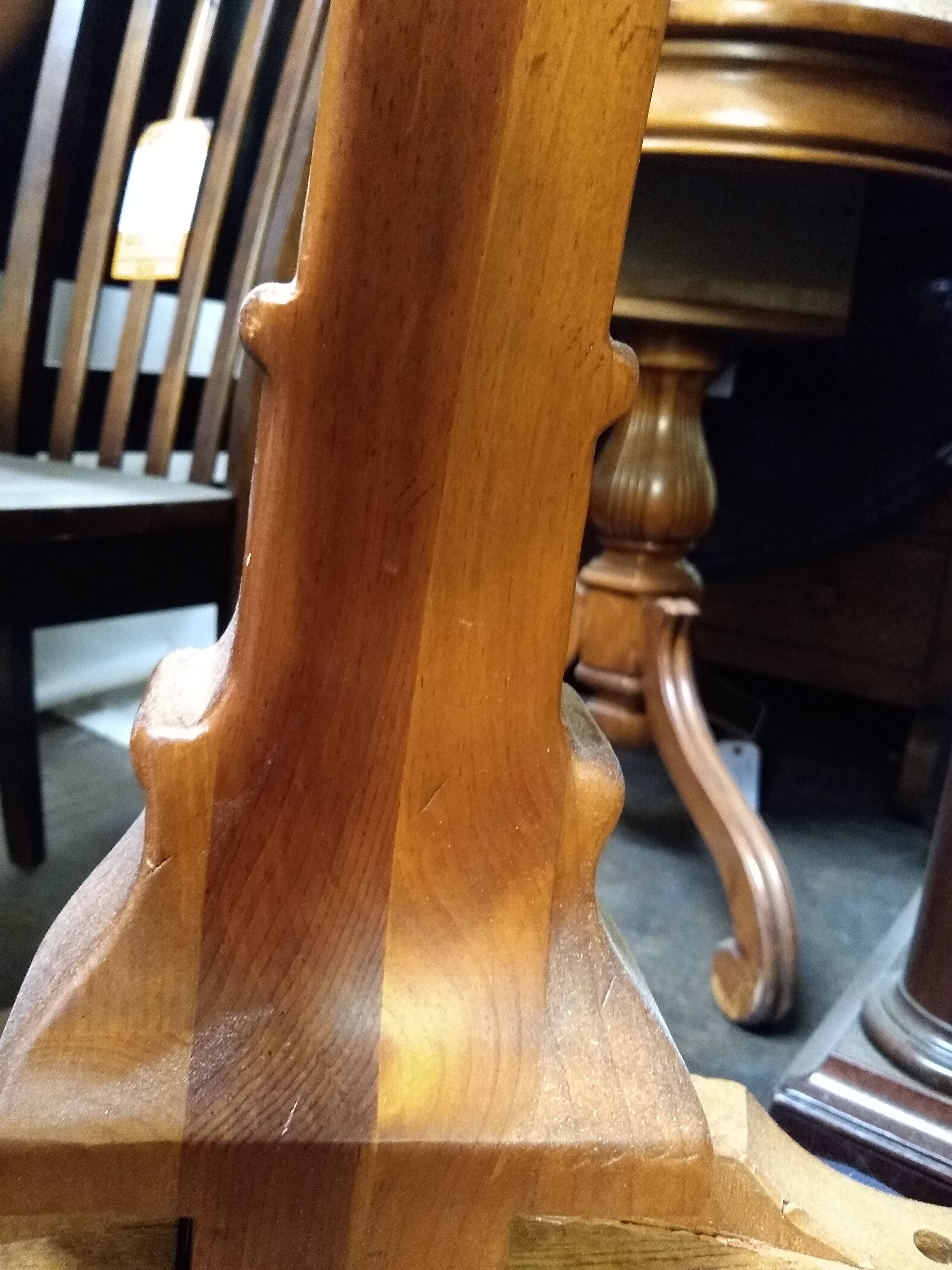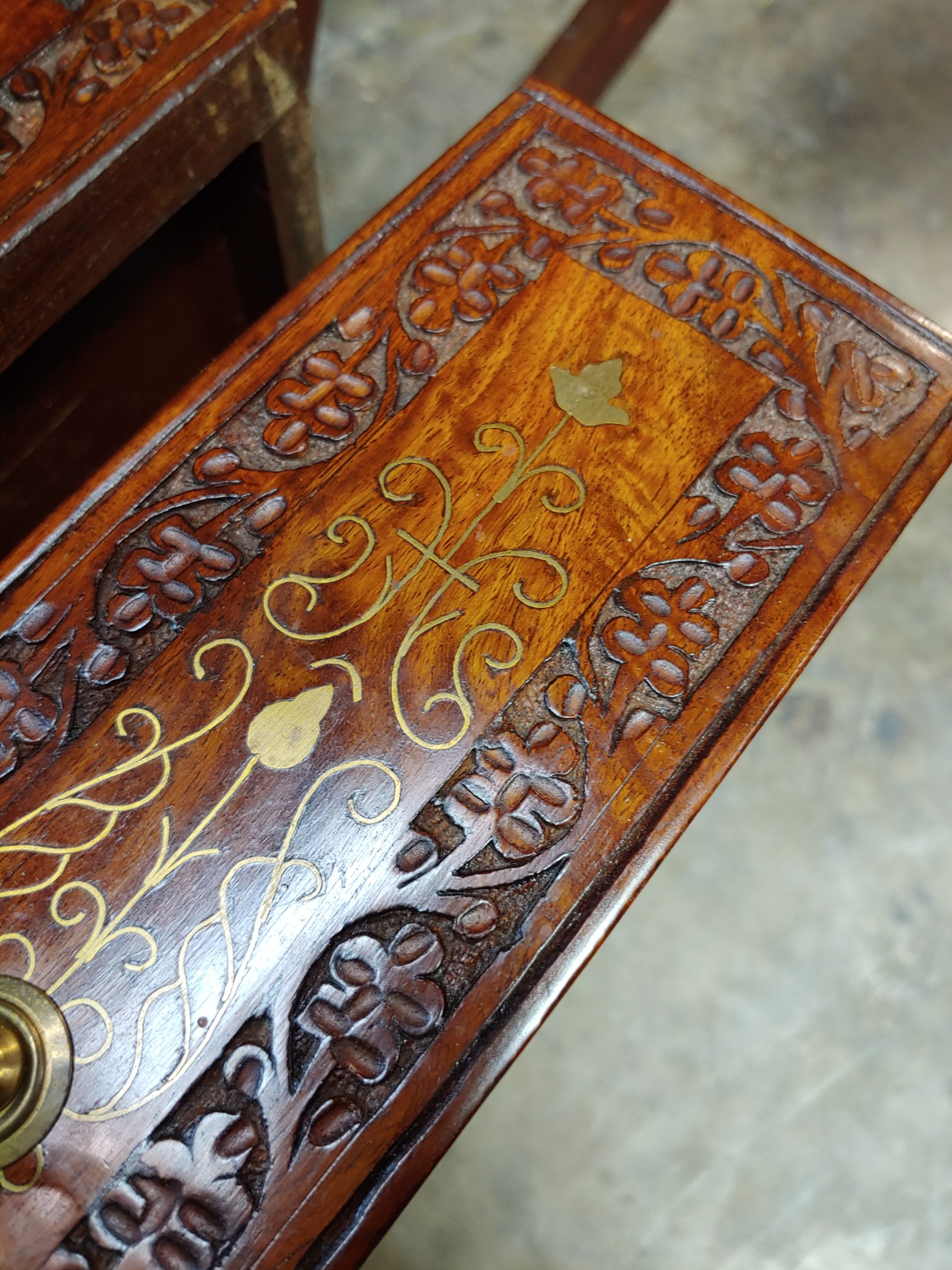How to Identify Different Types of Wood in Antique Furniture
Furniture-makers choose different types of woods to be used in furniture for their various qualities. With a myriad of ways to cut and stain wood, it can sometimes be difficult to determine the type of wood used in antique furniture and trace it to a specific period. There are additional variations within each wood type, such as “knotty pine” or “bird’s-eye maple,” that can complicate the identification process. There are many books and online resources to use, but experience is always the best teacher as trees grow differently in each environment.
This is only short overview on how to identify types of wood and how to recognize common characteristics. Lumber is often divided into soft and hardwood. Softwoods are not necessarily any less durable than hard, but they are supple and easier to work with. Softwoods are usually conifers, while hardwoods are from deciduous trees.
These are some of the most common types of antique woods used in history and still used today.
Softwoods
 Pine — An extremely common wood, pine is lightweight and resists shrinking or swelling, however it is prone to splitting. The timber commonly has straight grain and is white or pale yellow, which darkens over time. Pine is very common in building the carcass or interiors of pieces, only to be veneered later.
Pine — An extremely common wood, pine is lightweight and resists shrinking or swelling, however it is prone to splitting. The timber commonly has straight grain and is white or pale yellow, which darkens over time. Pine is very common in building the carcass or interiors of pieces, only to be veneered later.
Hardwoods
 Mahogany — Native to Central, South America and the West Indies, mahogany is a popular type of wood used in furniture in European styles. It has a distinctive grain pattern and ranges from light brown to red, sometimes with a ribbon effect. You will often see it used on dining tables and dressers, sometimes solid or commonly as a veneer.
Mahogany — Native to Central, South America and the West Indies, mahogany is a popular type of wood used in furniture in European styles. It has a distinctive grain pattern and ranges from light brown to red, sometimes with a ribbon effect. You will often see it used on dining tables and dressers, sometimes solid or commonly as a veneer.
 Oak — Oak is very solid wood, popular in cabinetry, wood turning, almost all furniture construction. Red and white oak are very popular varieties. Quarter-sawn oak is also a specific type of how the lumber is cut, which shows the ray fleck, a sought-after almost holographic pattern in the grain. Oak is very popular in the Arts and Crafts movement. Ash is commonly used to replace oak and the two can be easily confused.
Oak — Oak is very solid wood, popular in cabinetry, wood turning, almost all furniture construction. Red and white oak are very popular varieties. Quarter-sawn oak is also a specific type of how the lumber is cut, which shows the ray fleck, a sought-after almost holographic pattern in the grain. Oak is very popular in the Arts and Crafts movement. Ash is commonly used to replace oak and the two can be easily confused.
 Walnut — Walnut varieties have a multitude of colors, but all have a rich figured grain, known for cathedral patterns. Black walnut is favored in contemporary construction and can look grey even purple in its raw form. Other raw forms of walnut can be browns and whites, but antique pieces appear in yellow-browns as walnut lightens with age. Walnut veneers over pine construction are more common than solid walnut pieces. Walnut burl veneers are also common on edges and trim in larger pieces.
Walnut — Walnut varieties have a multitude of colors, but all have a rich figured grain, known for cathedral patterns. Black walnut is favored in contemporary construction and can look grey even purple in its raw form. Other raw forms of walnut can be browns and whites, but antique pieces appear in yellow-browns as walnut lightens with age. Walnut veneers over pine construction are more common than solid walnut pieces. Walnut burl veneers are also common on edges and trim in larger pieces.
 Rosewood — This wood gets its name from the scent it gives off when you cut it, much like the flower. It can look similar to mahogany, but has fine black or white rings and is much heavier lumber. Pictured is Chinese Rosewood with intricate carvings and inlay.
Rosewood — This wood gets its name from the scent it gives off when you cut it, much like the flower. It can look similar to mahogany, but has fine black or white rings and is much heavier lumber. Pictured is Chinese Rosewood with intricate carvings and inlay.
 Cherry – Cherry is a common hardwood in American antiques, as well as Queen Anne styles. The wood is almost pink when first cut, but darkens with age to beautiful browns and reds. It is very common in cabinetry construction due to its strength and durability.
Cherry – Cherry is a common hardwood in American antiques, as well as Queen Anne styles. The wood is almost pink when first cut, but darkens with age to beautiful browns and reds. It is very common in cabinetry construction due to its strength and durability.
If you are unsure about a piece of antique furniture or the type of wood it is made from, bring it in to us! We can help you restore or refinish your antique furniture with the right kind of care specific to that wood and piece.
